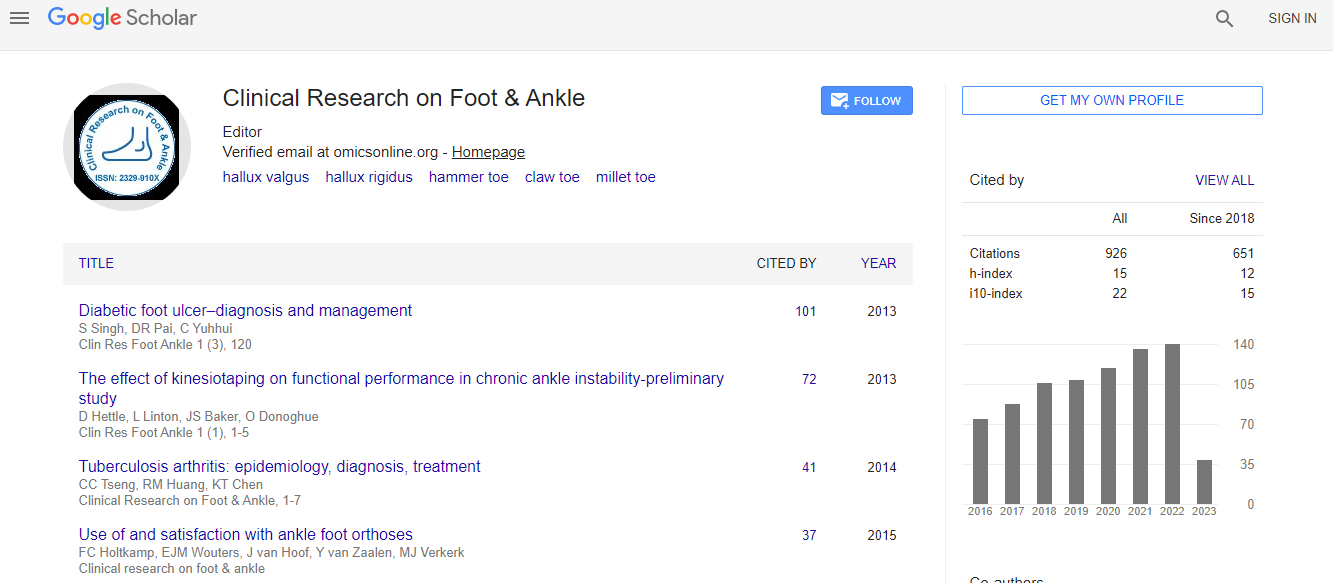Review Article
Critical Appraisal of Foot and Ankle Amputations in Diabetes
| Rinonapoli G1*, Ceccarini P1, Altissimi M2 and Caraffa A1 | ||
| 1Orthopaedic Department, University of Perugia, Italy | ||
| 2Orthopaedic Department of Terni, University of Perugia, Italy | ||
| Corresponding Author : | Rinonapoli Giuseppe, MD Orthopaedic Department University of Perugia, Italy Tel: 347-8670873 E-mail: grinonapoli@yahoo.it |
|
| Received February 22, 2014; Accepted March 20, 2014; Published March 25, 2014 | ||
| Citation: Rinonapoli G, Ceccarini P, Altissimi M, Caraffa A (2014) Critical Appraisal of Foot and Ankle Amputations in Diabetes. Clin Res Foot Ankle S3:005. doi:10.4172/2329-910X.S3-005 | ||
| Copyright: © 2014 Rinonapoli G, et al. This is an open-access article distributed under the terms of the Creative Commons Attribution License, which permits unrestricted use, distribution, and reproduction in any medium, provided the original author and source are credited. | ||
Related article at Pubmed Pubmed  Scholar Google Scholar Google |
||
Abstract
Diabetes is the leading cause of non-traumatic amputation in the world. Patients with diabetes have a 10-fold increased risk for lower extremity amputation compared with those who do not have diabetes. Amputees with diabetes are more likely to be severely disabled, to experience their initial amputation at a younger age, progress to higher-level amputations, and die at a younger age compared with patients without diabetes. Indications for amputation are chronic lower limb ulcers, infected or not infected, due to peripheral neuropathy, vascular disease or deformity of the feet. Foot ulcer precedes amputations in 84% of the cases. Amputation in diabetes is not a riskless treatment. The 5-year relative mortality rate is 48% after major limb loss. After a major limb loss, there is a 50% probability of developing a serious lesion on the contralateral limb within 2 years. In the present review and clinical appraisal, indications for determination of the level of amputation, the possible consequences of a specific amputation on stance, deambulation, necessity of using a specific footwear or prosthesis, technical problems and complications are discussed.

 Spanish
Spanish  Chinese
Chinese  Russian
Russian  German
German  French
French  Japanese
Japanese  Portuguese
Portuguese  Hindi
Hindi 
